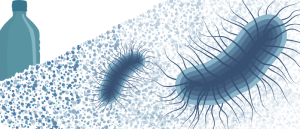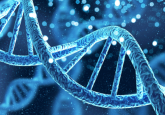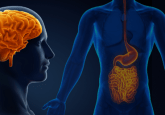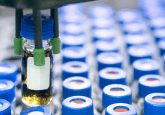New method for detecting nanoplastics in liquids

A method for the comprehensive analysis and characterization of nanoplastics in liquids has been developed.
A collaboration between Graz University of Technology and the biotech company BRAVE Analytics (both Graz, Austria) has led to the development of a new method for detecting nanoplastics in liquids and determining their chemical composition. This method involves combining optofluidic force induction with Raman spectroscopy and inductively coupled plasma-time-of-flight-mass spectrometry for a more comprehensive analysis of single particles.
Microplastics, and the much smaller nanoplastics, are being produced at accelerating rates and are increasingly integrated into scientific and industrial applications. This has led to the buildup of microplastics in both the environment and in humans; in humans, although a large proportion of nanoplastics are excreted, certain amounts can remain in organs, blood and other fluids.
Analytical techniques have been developed both to investigate the utility of nanoparticles in scientific and industrial applications as well as to assess their toxicity and environmental impact. These include techniques that characterize different parameters of nanoparticles such as concentration, mass and size distribution, and molecular and elemental composition.
While these techniques allow for certain properties of nanoparticles to be characterized, they are difficult to combine to interpret properties coherently. Therefore, a comprehensive picture is difficult to obtain.
Building upon previous work by the collaborative research group, and to address the challenges outlined above, the team have developed a hyphenated method for detecting and quantifying nanoplastics in liquids in two steps.
 The link between microplastics and antimicrobial resistance
The link between microplastics and antimicrobial resistance
We spoke to Neila Gross about how microplastics – tiny shards of plastic debris – affect antimicrobial resistance.
The first step – optofluidic force induction – involves the liquid being drawn into the sensor platform, which was developed by BRAVE Analytics. Here, a weakly focused vortex laser beam is shone through the liquid, optically trapping individual particles and accelerating or decelerating them based on size. Not only does this process separate the nanoplastic particles by size, it also allows Raman spectroscopy to be performed. The researchers can then analyze the frequency spectrum of laser light scattered by individual particles, revealing more about the composition of the particles.
“Depending on the material of the focused particles, the frequency values are slightly different in each case and thus reveal the exact chemical composition,” commented study author Harald Fitzek (Graz University of Technology). “This works particularly well with organic materials and plastics.”
Next, the elemental composition and distribution in mass and size of the particles can be characterized by inductively coupled plasma-time-of-flight-mass spectrometry. Together, these steps allow for the advantages of each technique to be harnessed for the more in-depth and accurate analysis of nanoparticles.
As an exemplary application of the method, researchers from Graz University of Technology are now investigating the extent to which intraocular lenses release nanoplastics after mechanical stress or when exposed to laser energy.





